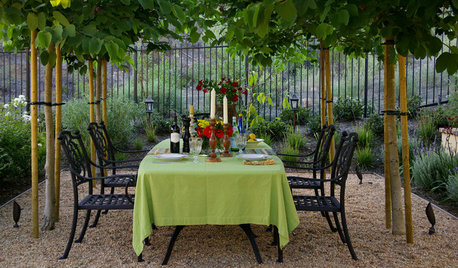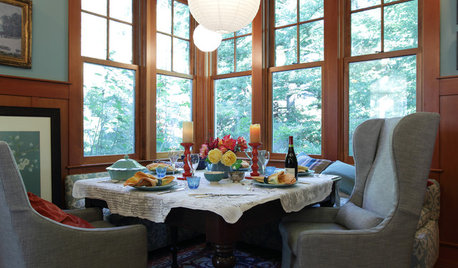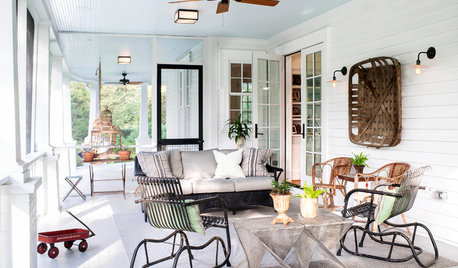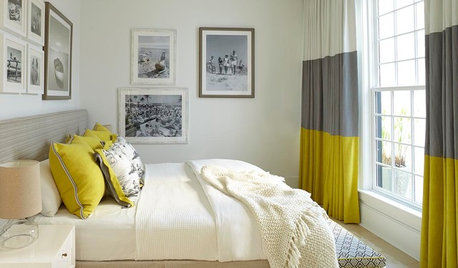Al's Gritty Mix -- A Learning Experinece
Jessicasgrowincitrus
13 years ago
Featured Answer
Comments (138)
Matt F
8 years agolast modified: 8 years agoMatt F
8 years agoRelated Discussions
Welcome back Al, questions about Al's mix and gritty mix
Comments (2)"Did you later start using the gritty mix and abandon the basic mix?" No. I use the gritty mix for plants that will be in the same soil for more than a single growth cycle. I use the 5:1:1 mix for all my veggies and display containers for the decks & gardens. I usually turn the 5:1:1 mix into the gardens, beds, or the compost pile at the end of the season. You got the gritty mix right, but The 5:1:1 mix is 5 parts partially composted pine bark fines 1 part sphagnum peat 1 part perlite garden lime The granite for the gritty mix is usually found at rural elevators/feed stores under the name "Gran-I-Grit" (grower size) or Cherry Stone (#2 size). Al...See MoreFor Jessica and anyone else that is interested 1.1.1 gritty mix.
Comments (42)Soil-less is hydroponics. Organics is a scam. Chemical fert is salts. Organics need to be broken down to the same salts that chemical fertilizer is made of before plants will absorb them. i have no problem with organics but it's not better than chemicals. Urine is organic feces is organic dead rotting animals is organic household ammonia is organic anything grown with artificial light, even just sprouted seeds, is not organic. Organic trees can be non organic trees fed organics only for a year. So something like grapefruit that takes 15 months to grow can start growing on chemicals, switched over, and be sold as organic....See MoreAl's Gritty Mix - A-1 Grit Size
Comments (10)Re: "Is there a thread that will tell me exactly how much to mix of each and how to screen etc?" I'm sure there are many others that are just as good, but I happened to have this one bookmarked: http://forums2.gardenweb.com/forums/load/contain/msg031028425011.html It's a 1:1:1 mix, or equal parts by volume, of the granite, Turface, and bark. As for screening, that's covered more in the thread, but I believe you're aiming for a particle size of between 1/4, and ideally 1/8 inch, but 1/16 is acceptable. I was never able to find a 1/8 screen, and screened everything over an aluminum insect screen (1/16) without any real ill effects besides needing to add a wick in my largest pots. Here's what my last batch ended up looking like: That said the ratio not an exact formula that you have to follow. Example: I'm trying a mix of 1 part bark, 1 part granite, 2 parts Turface for more water retention in my potted hydrangeas. Once you get the hang of the mix you can try to adjust it to suit your needs, but honestly out of almost 30 different kinds of plants and trees I grow in containers - the hydrangeas were the only ones I felt compelled to mess with the ratio, everything else seems to love the mix. Though one of my orchids is being finicky in it... Here is a link that might be useful: Al's Gritty Mix -- A Learning Experinece...See Morefruit set in heat; tomatoes vs peppers vs eggplants
Comments (14)I would say, scientifically, my results are inconclusive. Anecdotally, heat does not interfere with fruit set on my peppers, and, like Humsi, may even be helpful. However, the correlation of temperature:fruit set may be more related to WHEN my peppers normally set fruit, irrespective of the temperature. My peppers really start to kick off with the flowers later in the season, late July-August because peppers are just slower. Since I grow a lot of early-mid season determinate tom's, many of them have already set, and maybe even ripened, most of their fruit. This also corresponds with when we often see some our most brutal summer heat. Correlation does not always equal causation. I will say that WATERING has much more of an effect on fruit set than temperatures with my peppers. I grow them in containers and while I do let them get fairly dry between watering, if I let them go a little too far (which I do, from time to time) the flowers will be all over the ground the next day. If they are adequately watered, however, the heat doesn't seem to bother them in the least. Again, like Humsi, we often have humidity that barely breaks out of the single digits (today it was 9%, so low the heat index was 6 degrees cooler than the ambient air temperature.)...See Moreblytheinspired
8 years agotapla (mid-Michigan, USDA z5b-6a)
8 years agojodik_gw
8 years agoblytheinspired
8 years agojodik_gw
8 years agoJill
8 years agolast modified: 8 years agoYasser Zubaidi
8 years agopharaohbirdienc
7 years agotapla (mid-Michigan, USDA z5b-6a)
7 years agopharaohbirdienc
7 years agotapla (mid-Michigan, USDA z5b-6a)
7 years agopharaohbirdienc
7 years agoRandall Stewart
7 years agoharry757
7 years agobragu_DSM 5
7 years agolast modified: 7 years agotapla (mid-Michigan, USDA z5b-6a)
7 years agoYayi (SouthFL 10b)
7 years agotapla (mid-Michigan, USDA z5b-6a)
7 years agowestes Zone 9b California SF Bay
6 years agotapla (mid-Michigan, USDA z5b-6a)
6 years agowestes Zone 9b California SF Bay
6 years agotapla (mid-Michigan, USDA z5b-6a)
6 years agowestes Zone 9b California SF Bay
6 years agolast modified: 6 years agotropicofcancer (6b SW-PA)
6 years agogardengal48 (PNW Z8/9)
6 years agowestes Zone 9b California SF Bay
6 years agolast modified: 6 years agotapla (mid-Michigan, USDA z5b-6a)
6 years agogardengal48 (PNW Z8/9)
6 years agolast modified: 6 years agoTheStar
6 years agotapla (mid-Michigan, USDA z5b-6a)
6 years agoTheStar
6 years agoTheStar
6 years agotapla (mid-Michigan, USDA z5b-6a)
6 years agoal3tte (PA/NJ 5b)
6 years agotapla (mid-Michigan, USDA z5b-6a)
6 years agoKathy Maxwell (Z 5a)
6 years agomblan13
6 years agotapla (mid-Michigan, USDA z5b-6a)
6 years agoKathy Maxwell (Z 5a)
6 years agowestes Zone 9b California SF Bay
5 years agolast modified: 5 years agoKhiem Tran
4 years agogreenman28 NorCal 7b/8a
4 years agoKhiem Tran
4 years agotapla (mid-Michigan, USDA z5b-6a)
4 years agoRovash
3 years agolearningasigrow
3 years agostillinwisconsin
3 years agotropicofcancer (6b SW-PA)
3 years ago
Related Stories

LANDSCAPE DESIGNEnjoy the Romance of Dining in a Classic Gravel Garden
Here’s what to consider when it comes to installing, styling and maintaining a DIY-friendly gravel patio
Full Story
FUN HOUZZHouzz Quiz: What's Your Decorating Style?
Answer these 9 questions to find out what decorating style suits you best
Full Story
NEW THIS WEEK3 Fresh Ideas for Outdoor Living Spaces
Designers share secrets from a rooftop deck, a covered patio and a screened-in porch uploaded this week to Houzz
Full Story
SAVING WATER11 Ways to Save Water at Home
Whether you live in a drought-stricken area or just want to help preserve a precious resource, here are things you can do to use less water
Full Story
DECORATING GUIDES13 Decorating Tips for Short-Term Renters
Mirrors, curtains, lamps and other features set a stylish tone you can take with you
Full Story
HOUZZ TOURSNautilus Studio: Creative Living in 600 Square Feet
Two Seattle artists turn a tiny storage space into their ultimate canvas
Full Story






Matt F